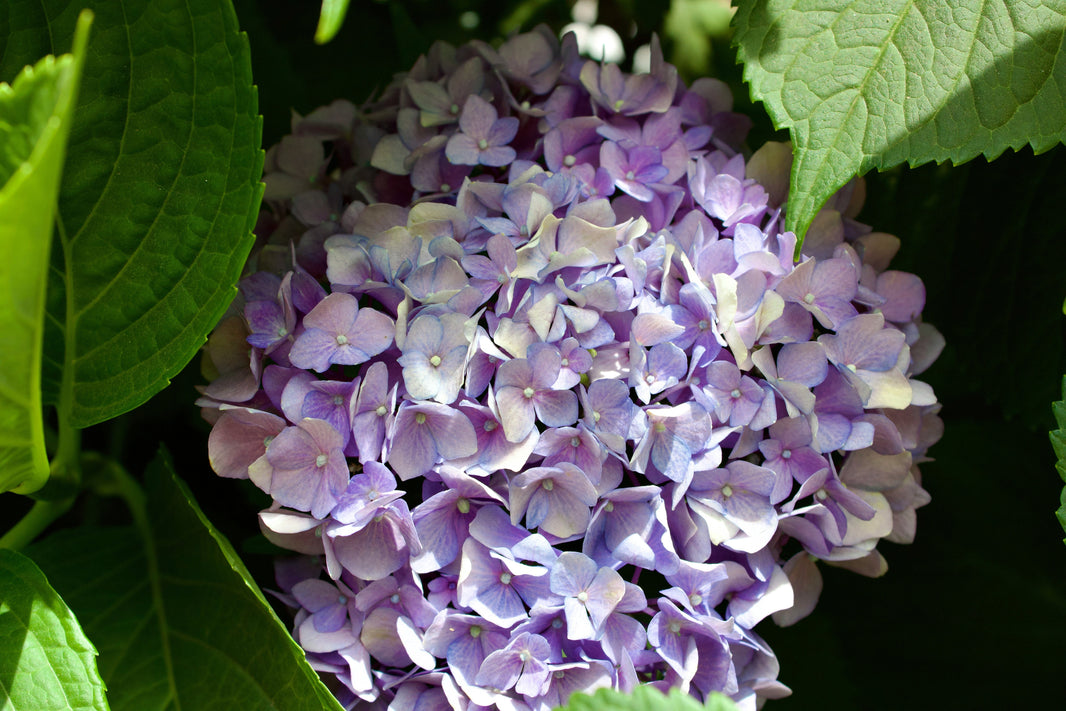Planning a wedding for 100 guests is an exciting milestone, but it’s also one that brings serious budget considerations—especially when it comes to feeding everyone. Food and beverages are among the largest expenses in a wedding budget, and understanding the wedding catering cost is crucial for effective planning and avoiding surprises.
Catering isn’t just about serving a meal. It includes food preparation, staffing, service equipment, beverages, cleanup, and sometimes even rentals like plates and utensils. That’s why catering costs can quickly climb if not properly managed. Whether you’re envisioning a formal plated dinner or a casual buffet, understanding the total scope is key.
So, what is the average cost to feed 100 guests? In the United States, most couples spend between $5,000 and $15,000 on wedding catering, depending on location, service type, menu choices, and add-ons. This breaks down to about $50 to $150 per person, though some premium caterers may charge even more.
Every wedding is unique, and your catering choices should reflect your style, budget, and priorities. While some couples focus on gourmet experiences and signature cocktails, others prioritize value, simplicity, and guest satisfaction. The good news is there are catering solutions for every vision.
Understanding wedding food pricing requires more than a per-plate estimate. You’ll want to consider all related services, including staffing, rentals, gratuities, and bar packages. In many cases, those extras add 20% to 40% to the base cost. Transparency with your caterer from the beginning is essential.
Food also plays a major role in the guest experience. Sharing a meal is one of the most communal parts of any wedding, and it’s an opportunity to express your personalities through cuisine. With smart planning, you can deliver a delicious experience without overspending.
In this blog post, we’ll explore every aspect of catering for 100 guests—from service styles and menu trends to cost-saving strategies and hidden fees. Whether you’re planning a luxury celebration or a modest gathering, you’ll learn how to approach catering with clarity and confidence.
Average Per-Person Cost Breakdown
When you begin meeting with caterers or researching options online, one of the first figures you’ll encounter is the per-person cost. This is the foundation of wedding food pricing and serves as a guide for estimating your overall catering budget. For a party of 100, this number multiplies quickly, so it’s essential to understand what’s included.
The average cost per guest typically ranges from $50 to $150, depending on menu complexity, ingredients, service style, and regional pricing. A simple buffet might fall closer to $50 per head, while a multi-course plated dinner with premium ingredients may reach $150 or more.
Service fees, taxes, and gratuities are often not included in the base per-person rate. It’s important to ask your caterer whether the quote is “all-inclusive” or if additional costs will be added later. These extras can increase your total by 20% to 40%, affecting your overall wedding catering cost.
Some caterers also have minimums, regardless of guest count. For example, they might charge a base fee of $8,000 even if you’re only planning for 100 guests. Be sure to clarify this in early discussions to avoid surprises as you finalize your budget.
Beverage costs may be separate or bundled into the per-person fee. An open bar with wine, beer, and cocktails could add $20 to $40 per guest, while a more limited drink menu might cost just $10–$15 per guest. Dry weddings or BYO alcohol options can significantly reduce this portion of the budget.
Additional menu elements like hors d’oeuvres, dessert bars, or late-night snacks add to the per-person average. These extras range from $5 to $20 per person, depending on the type and presentation. Ask for a detailed breakdown to see how each choice affects your per-guest cost.
Menu customization plays a role in pricing as well. Organic, locally sourced, or specialty diet items may carry an upcharge. Gluten-free, vegan, or kosher menus may also require more labor or specific suppliers, which can raise the per-head rate.
Geography is a key factor in wedding catering pricing. Major metropolitan areas like New York, Los Angeles, or San Francisco tend to have higher base rates than smaller towns or rural venues. If you’re planning a destination wedding, factor in local cost-of-living variations.
Seasonality also impacts per-person cost. Peak wedding seasons (spring and fall) are more expensive due to higher demand. If you’re flexible, hosting your event in the off-season or on a weekday may yield discounts or added perks.
When budgeting for your wedding, remember that catering is often the largest line item. Using the per-person rate as a benchmark allows you to make informed decisions and allocate funds strategically. The more you understand the breakdown, the more control you’ll have over your total wedding catering cost.
Catering Styles and How They Affect Pricing
One of the most influential factors in your overall wedding catering cost is the service style you choose. Each catering format comes with different price points, staffing needs, and guest experiences. Understanding these options helps you balance cost, convenience, and ambiance.
Plated dinners are the most traditional and typically the most expensive. In this style, guests are served at their tables by waitstaff, and meals often include multiple courses. Plated dinners average $100–$150 per guest, due to labor intensity and elevated presentation. This option adds sophistication but requires a higher staffing budget.
Buffets are a popular and cost-effective alternative. Guests serve themselves from a central setup, reducing labor and offering more variety. Buffets generally range from $40 to $75 per guest and are ideal for casual or semi-formal weddings. However, they require more food since guests tend to take larger portions, potentially increasing the food budget.
Family-style service bridges the gap between plated and buffet styles. Dishes are served to each table, and guests pass them around like a shared meal. It’s a warm, communal approach that costs around $65–$100 per guest. While staffing needs are reduced compared to plated service, presentation and food quantity requirements still affect pricing.
Food stations create an interactive experience. Examples include taco bars, pasta stations, and carving tables. Stations typically cost $75–$120 per guest and require chefs or attendants to prepare dishes on demand. They encourage guest movement and mingling, but they may need more equipment and floor space.
Cocktail-style receptions are trendy for non-traditional weddings. Instead of a full meal, guests enjoy passed hors d’oeuvres or small bites from stations. This option can cost anywhere from $40 to $90 per guest, depending on quantity and complexity. While you save on dinner, you may need more appetizers to keep guests full.
Drop-off catering is the most budget-friendly choice. Food is delivered ready-to-serve, and you or your team manage the presentation and service. Prices range from $20 to $45 per guest, ideal for ultra-casual or at-home weddings. However, you’ll need to handle clean-up and setup logistics yourself.
Hybrid catering combines elements of multiple styles—for example, a plated salad, buffet main course, and dessert bar. This approach offers flexibility and can be tailored to suit both your budget and event flow. Expect to pay in the $60–$100 range per guest for hybrid setups.
For backyard weddings or informal settings, food trucks are gaining popularity. One or two trucks serving tacos, sliders, or BBQ can create a relaxed vibe. Packages for 100 guests generally range from $1,500 to $4,000 total, depending on cuisine and duration of service.
Be sure to clarify what’s included in your caterer’s proposal—staffing, equipment, rentals, and cleanup may or may not be bundled. Confirm every detail to get a true sense of value.
Choosing the right catering style for your event not only helps manage your wedding food pricing but also shapes the atmosphere and guest experience. Select the format that aligns with your theme, space, and dining expectations.
Bar Options and Beverage Costs
Drinks are a key component of many wedding receptions, and they come with their own unique pricing structure. Whether you’re planning a champagne toast or an open bar with premium cocktails, understanding beverage service costs will help you plan a well-rounded event to feed 100 guests without blowing your budget.
The most common approach is the open bar. Guests enjoy unlimited access to wine, beer, and cocktails throughout the event. This premium experience usually costs $25–$45 per person, totaling $2,500 to $4,500 for 100 guests. Premium liquor and extended service hours increase this total.
Beer and wine only bars are more affordable and still well-received. These typically cost $12–$25 per guest and are easier to manage, especially with smaller venues. For 100 guests, expect to spend around $1,200 to $2,500.
Cash bars eliminate alcohol costs for the host by having guests pay for their own drinks. However, this is often frowned upon at weddings. If you’re considering this option, weigh it carefully against guest expectations and overall experience.
Corkage fee models allow you to purchase your own alcohol and pay the venue or caterer to serve it. This can save thousands—especially if you buy in bulk from warehouse retailers—but fees can add up. Corkage ranges from $5 to $15 per bottle or $200–$1,000 for general service.
Signature cocktails are a fun and cost-effective way to offer a bar experience without going all out. Choose two drinks that reflect your personalities and serve them alongside wine, beer, or a basic spirit. This keeps inventory and bartender needs lower, often reducing your wedding catering cost.
Champagne toasts are often included in bar packages or available as a standalone option. Budget $2–$4 per guest for the toast alone—more if you’re choosing a premium brand. Some couples opt for sparkling wine alternatives to keep costs down.
Mocktails and non-alcoholic bars are gaining traction. Providing creative options like infused waters, sodas, or non-alcoholic spirits ensures inclusivity. These bars cost significantly less—often $5–$10 per guest—but still enhance the guest experience.
Service methods impact pricing too. Passed drinks, self-serve bars, or satellite bars each have different staffing and supply requirements. Make sure your caterer explains exactly how drinks will be served and what’s included in their quote.
Always account for glassware, napkins, mixers, ice, and refrigeration. If these aren’t included in the bar package, they may come as separate rentals. Transparent quotes help you avoid hidden expenses.
Thoughtful beverage planning balances budget and guest satisfaction. Whether you go all-out or keep it minimal, a well-planned drink setup adds refreshment, fun, and flair to your wedding.
Staffing and Service Charges
Behind every well-executed wedding meal is a hardworking team that ensures everything runs smoothly. Staffing and service fees are a major part of your wedding catering cost, and understanding how they’re calculated is essential for realistic budgeting—especially when planning to feed 100 guests.
Caterers typically charge for staffing based on hourly rates or a flat percentage of the food and beverage total. The industry standard for service charges ranges from 18% to 25%, which is often added on top of your base catering bill. For example, if your food and drinks cost $10,000, service fees could add another $1,800 to $2,500.
Staffing requirements vary depending on your service style. A plated dinner needs the most staff—typically 1 server for every 10–15 guests. For 100 guests, that means 7 to 10 servers, plus a lead coordinator, a chef, and possibly assistants. These additional hands ensure that food is served hot and efficiently.
Buffets and stations require fewer servers, but you’ll still need staff to replenish food, clear plates, and keep things clean. Expect to hire 4–6 servers for 100 guests in a buffet setup. For stations, you may also need chefs or attendants to man each setup, which can raise your staffing costs.
Bartenders are another consideration. You’ll need at least one bartender per 50 guests for efficient service. For 100 guests, two bartenders are usually sufficient. Bartender fees typically range from $200 to $400 each, depending on service hours and cocktail complexity.
Setup and cleanup staff are essential but often overlooked. If your caterer is responsible for table setup, linen placement, dishwashing, or garbage removal, they’ll charge for these services. Setup and teardown staffing can add $300 to $800 to your overall bill.
Gratuities are sometimes included in your service charge, but not always. Many caterers leave this to the couple’s discretion, and tips of $50 to $100 per staff member are common for weddings. Always ask what’s expected and plan accordingly so you’re not caught off guard on the big day.
Overtime fees may apply if your event runs longer than scheduled. Most contracts include a specific number of service hours, and additional time is charged at premium rates. Clarify these terms in advance to prevent surprise charges if your reception goes late.
Some caterers bundle staffing fees into their per-person pricing to simplify billing. While this may seem convenient, it’s still important to request an itemized breakdown so you can evaluate value and compare vendor quotes effectively.
Hiring experienced, professional staff ensures a seamless dining experience. Their expertise keeps guests happy, timelines on track, and food delivered at peak quality. While staffing isn’t the most glamorous budget line item, it’s absolutely essential.
Factoring in realistic service costs allows you to better estimate your total wedding food pricing and avoid last-minute panic or unplanned expenses as your event date approaches.
Rentals and Equipment Considerations
Catering isn’t just about the food—especially when you’re working with a blank venue or outdoor location. Most caterers require basic equipment to cook, serve, and display their meals properly, and those necessities often come with rental costs. These expenses contribute directly to your wedding catering cost and should be included in your budget.
Start with tables and chairs. While your venue may provide some furnishings, many couples need to rent banquet tables, cocktail tables, or specialty chairs. Rental prices typically range from $10 to $25 per table and $2 to $10 per chair, totaling $400–$1,000 for 100 guests depending on your setup.
Linens and napkins are next. Standard polyester linens cost $10–$15 each, while upgraded fabrics like satin, velvet, or lace run up to $40. For 12–15 tables plus cocktail and buffet stations, expect to spend $300–$600 on linens alone.
Dinnerware, flatware, and glassware are essential for any formal meal. Per-person rental packages range from $5 to $10, which means another $500–$1,000 for 100 guests. Add-ons like charger plates, dessert forks, or champagne flutes will increase your total.
Catering equipment like chafing dishes, warming trays, portable ovens, and prep tables may also need to be rented—especially for outdoor or unconventional venues. These rentals can cost anywhere from $300 to $1,500 depending on what’s needed and for how long.
Bar setups are another expense to account for. If your venue doesn’t provide a bar area, you may need to rent bar tables, coolers, ice bins, and drink dispensers. This can add $200–$800 to your wedding food pricing, especially if you’re doing custom cocktails or a full-service bar.
Lighting and ambiance also tie into catering presentation. Buffet lighting, centerpiece illumination, or string lights for a nighttime reception may be handled by the caterer or require separate rentals. Always ask who’s responsible so nothing falls through the cracks.
Delivery and setup fees are often added to rental costs. These fees range from $150 to $500 depending on distance, labor requirements, and timing. If your event spans multiple days or requires a complex load-in, your costs may be higher.
Coordination between your caterer and rental provider is crucial. Miscommunication can lead to missing pieces or duplicate orders. Some caterers have preferred vendors, while others offer in-house rentals. Bundle when possible to streamline logistics and potentially save money.
Finally, make sure you have a contingency plan for weather if you’re hosting outdoors. Tents, flooring, heaters, and fans are pricey—but necessary for comfort and food safety. Plan early and budget accordingly to avoid scrambling at the last minute.
By preparing for rental needs early in the planning process, you’ll protect your event from logistical hiccups and keep your wedding catering cost aligned with expectations.
Hidden Fees and Common Budget Surprises
Even the most carefully planned wedding catering cost can spiral out of control if hidden fees sneak into the picture. Knowing what to expect—and what questions to ask—can save you hundreds, if not thousands, when you’re working to feed 100 guests without going over budget.
One of the most common hidden fees is the service charge. While it often sounds like a gratuity, it’s usually not a tip. Instead, it covers administrative and operational costs and typically ranges from 18% to 25% of your total food and beverage bill. Make sure you ask your caterer exactly what this fee includes.
Gratuity is often separate from the service charge. Most couples budget $50–$100 per server or bartender, depending on the level of service. If this isn’t included in your quote, you’ll need to add 10% to 20% of your catering total to ensure your staff is fairly compensated.
Another frequently overlooked cost is the tasting fee. Many caterers charge $50–$150 per couple for a menu tasting, although some may waive this fee if you book with them. Ask in advance whether tastings are included and how many guests can attend.
Corkage and cake-cutting fees can catch couples off guard. Even if you provide your own wine or cake, your caterer may charge a fee to serve it. Corkage fees range from $5 to $15 per bottle, and cake-cutting fees can cost $1–$3 per guest.
Overtime fees can also inflate your catering bill. If your reception runs longer than planned, staff may need to stay late—and that means extra hourly charges. Confirm your caterer’s policies on extended service hours, and always have a clear end time outlined in your contract.
Some caterers charge for additional rentals, such as coffee service, specialty plates, or barware. These may not appear on your initial quote but can be added later. Review your itemized list carefully and don’t hesitate to ask about any ambiguous charges.
Waste management and cleanup may also come with a price tag. Especially at venues without staff or in outdoor spaces, your caterer may require a trash service or cleanup crew, costing an additional $100–$500 depending on the event size.
Delivery and transportation fees vary based on location and complexity. If your venue is remote or requires multiple trips, these fees can climb quickly. Plan for $100–$500 in transport charges depending on distance and equipment.
Finally, last-minute changes can lead to surcharges. Whether it’s increasing your guest count, requesting special dietary accommodations, or adjusting your menu within days of the event, these alterations often come with additional costs and stress.
To stay in control of your wedding food pricing, always request a fully itemized proposal. Read the fine print, ask follow-up questions, and confirm every detail before signing your contract. Transparency from both sides is key to a successful and budget-friendly event.
Feeding 100 guests at a wedding is no small task, but it doesn’t have to feel overwhelming. With proper planning, open communication, and a clear understanding of what affects your wedding catering cost, you can serve a delicious meal, impress your guests, and still keep your finances intact.
The key is to know your numbers. From service styles and menu selections to rentals and staffing, each choice you make has a direct impact on your total cost. By breaking down the full picture and examining every element of your food service, you can approach your budget with clarity instead of confusion.
Flexibility is your friend. Whether it means choosing a buffet over plated service, limiting bar options, or picking seasonal dishes, small changes can yield major savings. Be open to creative solutions and prioritize the experiences that matter most to you and your guests.
Transparency with your caterer is essential. Don’t be afraid to ask detailed questions about hidden fees, taxes, and gratuity. Request itemized quotes and always clarify what’s included in any per-person price. Surprises can be lovely at weddings—but not when they’re on the final invoice.
Think beyond food when budgeting. Rentals, staff, setup, and cleanup all contribute to your final bill. A beautiful and smooth meal experience requires more than just good cooking—it’s about the entire dining process, from start to finish.
Décor also plays a major role in your dining ambiance. Consider how your floral design, tablescapes, and centerpieces will complement your menu. One way to make your reception stunning without overspending is to source wholesale flowers that allow you to create personalized arrangements with professional impact.
That’s where WholesaleFlowers.net becomes a valuable asset. Their wide selection of fresh, affordable blooms makes it easy to create elegant floral displays that elevate your event. Whether you’re a DIY bride or working with a planner, they offer quality and variety you can trust.
If you’re ready to transform your wedding décor with beautiful, affordable flowers, click here to explore their full collection. It’s one of the smartest ways to keep your event stylish while protecting your overall budget.
At the end of the day, your wedding meal is about more than dollars and cents—it’s about bringing people together around a table to celebrate love. With smart decisions and the right partners, you can serve a meal that’s memorable, meaningful, and perfectly priced.






